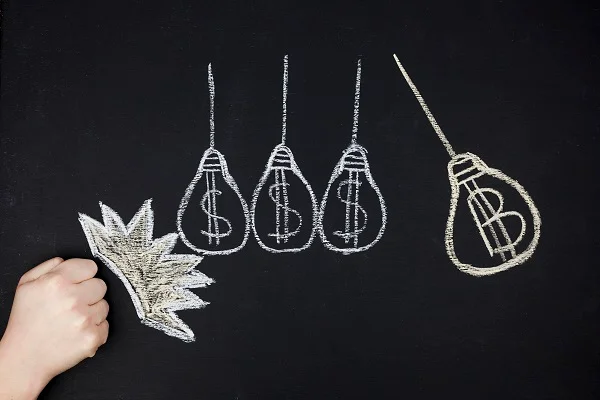In a world where traditional bank loans often serve as barriers rather than bridges, many aspiring homeowners and investors are turning to alternative solutions. Sarah, a first-time homebuyer with a decent credit score but not enough for a hefty down payment, discovered a lesser-known yet powerful tool: creative financing. This method not only helped her secure her dream home but also avoided the red tape of traditional banks. But what exactly is creative financing, and why is it becoming increasingly popular in today’s real estate and business markets?
What is Creative Financing?
Creative financing refers to non-traditional methods of buying real estate or funding a business without relying solely on bank-issued mortgages or conventional lending institutions. It often involves flexible arrangements between buyers and sellers that work around credit challenges, income limitations, or capital shortages.
Key Features of Creative Financing
-
Avoids standard bank loan requirements
-
Flexible terms based on buyer-seller agreements
-
Faster approval processes
-
Often requires lower down payments
-
Useful for both real estate investors and business owners
Why Creative Financing is Gaining Popularity
As property prices rise and mortgage interest rates fluctuate, traditional financing becomes harder to access for average earners and small business entrepreneurs. Creative financing steps in as a flexible, practical alternative.
Statistics That Show the Shift
-
According to the National Association of Realtors (NAR), 27% of homebuyers under age 35 used alternative forms of financing in 2023.
-
A survey by Bigger Pockets showed that over 35% of real estate investors used creative financing at some stage in their investment journey.
-
Bankrate reports that more than 40% of rejected loan applicants explored creative financing options post-denial.
These numbers indicate that more individuals are opting for personalized financing methods instead of battling rigid lending criteria.
Types of Creative Financing
There are multiple forms of creative financing tailored to different situations. Here’s a breakdown of the most common ones:
1. Seller Financing
Also known as owner financing, this method involves the seller acting as the lender. Instead of the buyer securing a mortgage through a bank, they agree to make monthly payments directly to the seller.
Benefits:
-
No bank approval required
-
Flexible terms
-
Lower closing costs
2. Lease Options (Rent-to-Own)
A lease option lets a buyer rent a property with the intent to purchase it later. Part of the rent goes toward the eventual down payment.
Benefits:
-
Ideal for those with credit issues
-
Time to build savings and credit
-
Locks in purchase price
3. Subject-To Financing
This strategy allows a buyer to take over an existing mortgage “subject to” its current terms. The loan remains in the seller’s name, but the buyer takes control of the property and makes payments.
Benefits:
-
No need to qualify for a loan
-
Fast closings
-
Can purchase property with little to no money down
4. Hard Money Loans
These are short-term loans secured by real estate, typically offered by private investors. They come with higher interest rates but offer faster access to cash.
Benefits:
-
Speedy access to funding
-
Minimal documentation
-
Ideal for flipping properties
5. Partnerships and Joint Ventures
Two or more parties combine resources one might supply capital, while the other handles renovations or management.
Benefits:
-
Reduced individual risk
-
Access to combined skills and resources
-
Flexible profit-sharing models
Pros and Cons of Creative Financing
Every method has advantages and potential drawbacks. It’s essential to evaluate your personal or business situation before deciding.
Pros
-
Flexibility in terms and structure
-
Lower financial barriers to entry
-
Creative problem-solving for credit issues
-
Opportunity for win-win deals
Cons
-
May involve higher interest rates
-
Risk of unclear legal boundaries
-
Requires thorough due diligence
-
Potential for scams if not carefully managed
When to Consider Creative Financing
Creative financing is particularly useful in the following scenarios:
-
You have poor or limited credit history.
-
You’re self-employed with non-traditional income.
-
You lack a sufficient down payment.
-
You’re an investor looking for fast, low-cost acquisitions.
-
You’re facing foreclosure but want to avoid damaging your credit.
Legal Considerations
While creative financing can open doors, it’s essential to consult legal and financial professionals to ensure all documents are legally sound. Missteps in contracts or unclear terms can lead to lawsuits or property loss.
Key Legal Elements to Secure
-
Promissory notes
-
Purchase agreements
-
Lease contracts
-
Disclosure documents
-
Title transfer documents
Case Study: Creative Financing in Action
Meet James, a budding real estate investor in Austin, Texas. He had no W-2 income but had saved $20,000 and had a network of potential renters. Through a lease-option agreement, he secured his first rental property by paying a small option fee and agreeing to purchase the property within 24 months. Over two years, James improved his credit, rented out the property for income, and finally exercised his option to buy without ever going through a traditional bank.
Tips for Using Creative Financing Successfully
Here are some practical guidelines to help you make the most of creative financing:
Do Your Homework
Understand the structure, benefits, and risks of each method before signing any contracts.
Vet All Parties
Whether it’s the seller, private lender, or joint venture partner, make sure everyone involved is credible and transparent.
Get Everything in Writing
Always document the agreement with signed legal contracts, including payment schedules, penalties, and contingencies.
Use Escrow When Possible
This ensures payments are made securely and documentation is handled correctly.
Creative Financing vs Traditional Financing
| Feature | Creative Financing | Traditional Financing |
|---|---|---|
| Credit Score Required | Often not required | Typically required |
| Down Payment | Low or flexible | 10%-20% standard |
| Speed of Process | Fast | Can take weeks or months |
| Customization of Terms | Highly customizable | Fixed by lender guidelines |
| Legal Complexity | Moderate to High | Standardized |
| Approval Process | Negotiated with individuals | Bank-regulated |
Industries Beyond Real Estate
While most common in real estate, creative financing is also gaining ground in:
-
Startups and small business funding
-
Equipment and vehicle leasing
-
Franchise ownership
-
Expansion capital for growing companies
Conclusion
Creative financing opens up a world of possibilities for those blocked by traditional financial systems. Whether you’re an aspiring homeowner, a savvy investor, or an entrepreneur, this approach can be a game-changer if handled wisely and legally. As economic conditions evolve, could financing become the new normal in how we buy, invest, and grow?





